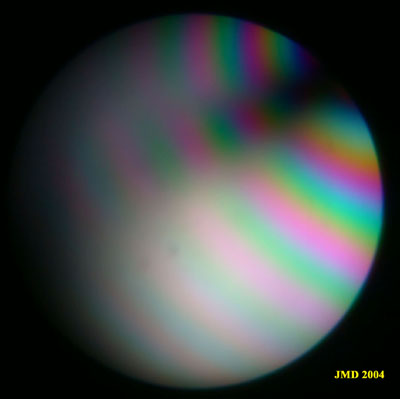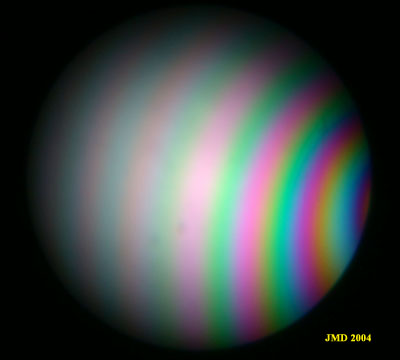Random section of gypsum.
Figures below come from a random section in a biaxial crystal (gypsum). The pole of one optic axis should be situated to the upper right of figure 1a, outside of the field of view. During the rotation of the microscope stage, a branch of the dark isogyres is crossing the field of view obliquely (figures 1a and 1b). Fore some crystal positions, the isogyres leave the field completely. Only a part of the extinction lemniscates can be viewed in the field (1c). With such a section, it is only possible to distinguish between uniaxial and biaxial crystals. The optical sign is difficult to determine. When such a conoscopic figure is seen in a thin section of rock, most of the time the isochromes are absent due to the very low thickness of the crystal except for high birefringence materials. Only the movement of the isogyres can be observed.
|
Figure 1a. Random section in gypsum. One branch of an isogyre lies in the figure. |
Figure 1b. Slight rotation of the microscope stage. The isogyre branch rotates to the top of the figure. |
|
Figure 1c. After further rotation, the isogyres leave the field. Only unsymmetrical extinction rings can be observed. |
Figure 1d. View of the extinction rings in monochromatic light. |



